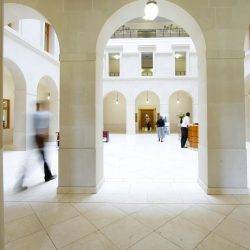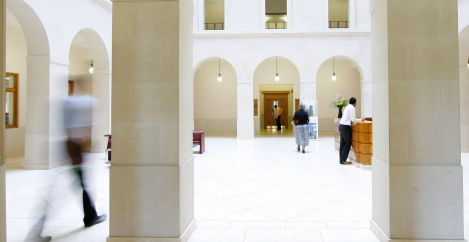July 28, 2017
UK commercial property market remains largely resilient
 Although the commercial property market in the UK is proving largely resilient, demand to rent levelled off for the first time in almost five years during the past three months, according to a study from The Royal Institution of Chartered Surveyors (RICS) Its gauge of commercial tenants’ demand for property fell to -2 for the second quarter of 2017, its lowest reading since the third quarter of 2012. Demand varies across market sectors, however, with occupier demand declining in the office and retail sectors of the UK commercial property market, but conditions in the industrial segment remain firm, according to the survey.
Although the commercial property market in the UK is proving largely resilient, demand to rent levelled off for the first time in almost five years during the past three months, according to a study from The Royal Institution of Chartered Surveyors (RICS) Its gauge of commercial tenants’ demand for property fell to -2 for the second quarter of 2017, its lowest reading since the third quarter of 2012. Demand varies across market sectors, however, with occupier demand declining in the office and retail sectors of the UK commercial property market, but conditions in the industrial segment remain firm, according to the survey.
“The commercial property market has enjoyed a good run and it is hardly surprising that we are now seeing a flatter trend emerge … which chimes both with recent economic newsflow and the political environment,” RICS’s chief economist Simon Rubinsohn said. “Anecdotally, political uncertainty is cited as a factor weighing on occupier and investor decisions, with hesitancy now extending to some areas beyond London.”
Occupier demand was broadly flat at the all-sector level during Q2 of 2017, following only modest increases in each of the last three quarters. In fact, the national demand net balance of -2 percent marked the weakest reading since 2012.
The breakdown shows a disparity between the sectors with demand for offices and retail space exhibiting a decline, offset by reasonable growth (net balance of +18 percent) in demand for industrial property. However, the pace of growth for industrial space has moderated, compared to the previous three quarters.
Near term rent expectations display a similarly mixed picture. While the outlook for industrial space remains firm with 29 percent more respondents expecting to see a rise in rents, a slightly softer trend is expected for offices and the retail sector.
Anecdotally, political uncertainty is cited as a factor weighing on occupier and investor decisions, with hesitancy now extending to some areas beyond London. Respondents cited Brexit negotiations and the General Election resulting in a hung parliament as clouding the outlook for commercial real estate.
Looking ahead, the less buoyant trend in tenant demand has yet to meaningfully impact on longer term rental projections where prime assets look likely to continue to deliver stronger rental performance.
Looking at the investment market, 10 percent more respondents cite a rise in investment enquiries during Q2 (rather than a decline). Mirroring the picture in the occupier market, enquiries in the office and retail sectors were little changed on the previous quarter, but continue to rise in the industrial area of the market.
In terms of capital values, projections turned marginally negative in the retail sector and are now flat in the office sector. In each instance, these were the weakest since the immediate aftermath of the referendum.
Conversely, expectations in the industrial sector remain positive. Capital value projections for London remain more cautious, with contributors expecting no change in all-property values over the coming twelve months. London also exhibited the largest share of respondents sensing the property cycle to be in the early stages of downturn (+65 percent, up from +52 percent previously).

























